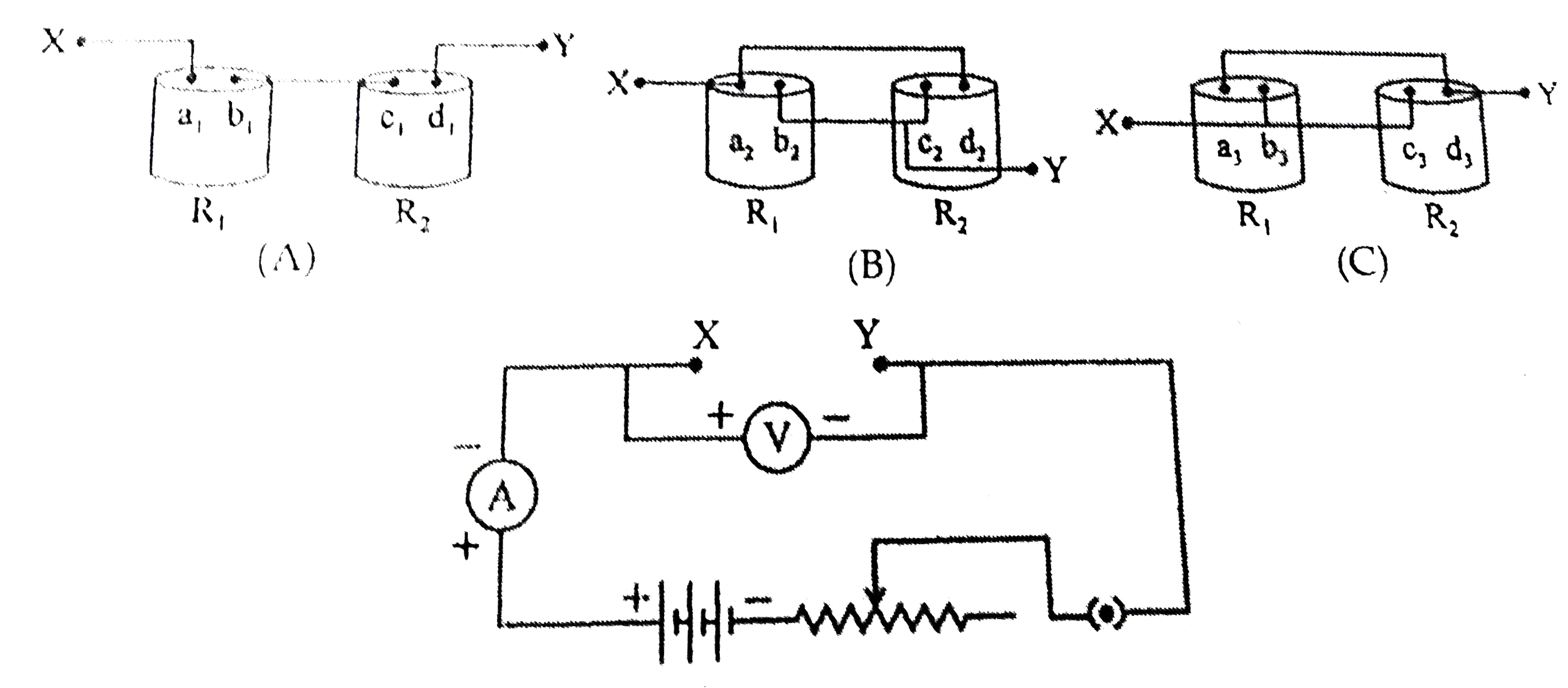A current I flows through a potential difference V in an electrical circuit containing a resistance R. The product of V and I, i.e., VI may be understood as
resistance R
heat generated by the circuit
thermal power radiated by the circuit
rate of change of resistance
The correct Answer is:C
To solve the question, we need to understand the relationship between current (I), potential difference (V), and resistance (R) in an electrical circuit. We are asked to interpret the product of V and I, which is represented as VI.
1. Understanding the Basics:
- In an electrical circuit, the potential difference (V) across a resistor and the current (I) flowing through it are related by Ohm's Law, which states that V=I×R, where R is the resistance.
2. Calculating Power:
- The product of the potential difference (V) and the current (I) can be expressed mathematically as:
P=V×I
- Here, P represents the electrical power consumed by the circuit.
3. Interpreting Power:
- The power (P) calculated as VI is the rate at which electrical energy is converted into another form of energy. In the case of a resistor, this energy is primarily converted into thermal energy (heat).
4. Thermal Power:
- When current flows through a resistor, it encounters resistance, which causes it to generate heat. This heat generation is often referred to as thermal power.
- Thus, the product VI can be understood as the thermal power radiated by the circuit.
5. Conclusion:
- Therefore, the product of the potential difference (V) and the current (I) in an electrical circuit containing a resistance (R) is interpreted as the thermal power radiated by the circuit.
Final Answer:
The product VI may be understood as the thermal power radiated by the circuit.
- In an electrical circuit, the potential difference (V) across a resistor and the current (I) flowing through it are related by Ohm's Law, which states that V=I×R, where R is the resistance.
- The product of the potential difference (V) and the current (I) can be expressed mathematically as:
P=V×I
- Here, P represents the electrical power consumed by the circuit.
- The power (P) calculated as VI is the rate at which electrical energy is converted into another form of energy. In the case of a resistor, this energy is primarily converted into thermal energy (heat).
- When current flows through a resistor, it encounters resistance, which causes it to generate heat. This heat generation is often referred to as thermal power.
- Thus, the product VI can be understood as the thermal power radiated by the circuit.
- Therefore, the product of the potential difference (V) and the current (I) in an electrical circuit containing a resistance (R) is interpreted as the thermal power radiated by the circuit.
The product VI may be understood as the thermal power radiated by the circuit.
Topper's Solved these Questions
Similar Questions
An electric geyser consumes electricity at the rate of 1000 W. If l the potential difference through the 1 electric circuit is 250 V, find the resistance offered by geyser and electric current through the circuit.
View Solution(a) What is the ratio of potential difference and current known as?
(b) The values of potential difference V applied across a resistor and the corresponding values of current I flowing in the resistor are given below:
Potential differenceV(in volts):2.55.010.015.020.025.0Current,I(in amperes):0.10.20.40.60.81.0
Plot a graph between V and I, and calculate the resistance of the resistor.
(c) Name the law which is illustrated by the above V-I graph.
(d) Write down the formula which states the relations between potential difference, current and resistance.
(d) The potential difference between the terminals of an electric iron is 240V and the current is 5.0A. What is the resistance of the electric iron?View Solution
Knowledge Check
- Question 1 - Select One
A 2-A current flows through a resistor when a potential difference of 20 V is applied across it. The resistance of the resistor is
A2ΩB1ΩC10ΩD20Ω - Question 2 - Select One
An alternating current by frequency v is flowing in a circuit containing a resistance R and inductance L in series. The impedance of this circuit is
AR = 2πvLB√R2+4π2v2L2C√R2+L2D√R2+2πvL - Question 3 - Select One
The resistance of a metal is given by R=V/I , where V is potential difference and I is current . In a circuit , the potential difference across resistance is V=(8±0.5)V and current in resistance , I=(4±0.2)A. What is the value of resistance with its percentage error?
A(2±5.6%)ΩB(2±0.7%)ΩC(2±35%)ΩD(2±11.25%)Ω
The equation of electromotive forces for an electric circuit containing resistance and self inductance is E=R i+Ldidt, where E is the electromotive force given to the circuit, R, the resistance and L, the coefficient of induction. Find the current i at time t when (i) E=0 (ii) E=a ,non-zero constant.
View SolutionA student carries out the experiment for studying the dependence of current (I) flowing through a resistor system of R1 and R2 on the potential difference (V) applied to it by connecting the resistor system to points X and Y of the measuring circuit as shown :

The average value of the ratio V/I, of his observations, would then be equalView SolutionTo study the dependence of current (I) on the potential difference (V) across a resistor, the correct way of connecting the ammeter and voltmeter in the circuit is :
View SolutionWhen a current of (5±0.5) A flows through a wire, it developes a potential difference of (40±1)V. The resistance of wire is
View SolutionThe curve between current (i) and potential difference (V) for a photo cell will be
View Solution
